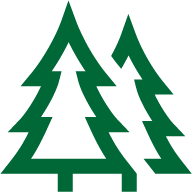
Tree Care Basics: A Starter Guide
How Do You Know If Your Trees Are Overdue For Pruning?
Johnni Knight
The trees on your property are unlike trees that grow wild in forests. A naturally growing tree doesn't care about its aesthetic appearance, and a few trees falling in the woods is rarely an issue. On the other hand, you probably care a great deal about how your trees look. More importantly, weak or damaged trees on your property can pose a serious safety hazard.
While many people view tree maintenance as purely aesthetic, pruning is a critical maintenance task. Pruning your trees helps to keep them strong, ensuring they can exist safely in a human-inhabited environment. If you've been ignoring your trees, here are three signs that you might be overdue for professional pruning.
1. Overly Dense Limbs
Trees need several things to ensure healthy growth, but airflow is one of the most critical. While you might think that trees love water (and they do!), moisture can often be their enemy. Excessive moisture on a tree's bark or leaves can promote fungal growth, and fungal diseases are some of the most significant threats to even healthy trees. Good airflow helps to keep your trees dry.
Unfortunately, knowing whether your tree is too dense or overgrown isn't always easy. However, if you can't see any light through the tree or notice many branches growing close together, your tree probably requires pruning. You can do light pruning from the ground, but contact a professional if your trees are large enough that you can't easily reach the overgrown areas. Never get up on a ladder to prune.
2. Crossing and Rubbing Branches
Crossing and rubbing branches are often an issue for reasons that go beyond overgrowth and airflow. When two branches cross, they will often rub together during storms or windy days. This rubbing can wear away the outer layer of bark, damaging and weakening the limbs. These wounds can also provide entry points for insects or diseases.
It may be hard to notice rubbing or crossing branches from the ground, but any tree that seems particularly overgrown will likely suffer from this issue. If in doubt, contact a professional tree service to evaluate your trees. An expert arborist can quickly determine if any of your tree's branches may be troublesome and remove those that pose a risk of rubbing.
3. Poor Sun Exposure
Yet another reason that dense foliage can be problematic is the need for sun exposure. Your tree's leaves exist to soak up that sunlight, but dense trees often create so much shade that their lower branches can't access the sun's energy. These shaded branches are likelier to weaken, leaving them vulnerable to pests, diseases, and breakage.
Pruning helps to ensure even sunlight, which has the added benefit of creating a tree that looks much cleaner and neater. If you notice that your trees have many branches lying in the shade, you're probably overdue for a pruning visit to help your entire tree enjoy the sunlight it needs. For more information on tree pruning, contact a professional near you.
Share

Proper tree care is an essential part of maintaining your property's appearance and overall well-being. After all, neglected trees can quickly become safety hazards if limbs should fall and damage your property. That's why it's important that you know how to take care of your trees. Luckily, this site is here to help. With the information on this site, you'll be able to better understand the different needs of each type of tree on your land. That way, you can tailor your tree care accordingly and you'll know when you should call a tree service for more help and ongoing care.
-
Why You Should Hire a Tree Company for Your Property 17 July 2024
-
The Benefits Of Removing Trees From Your Property 13 February 2024
-
The Importance of Professional Hazardous Tree Removal 19 January 2024